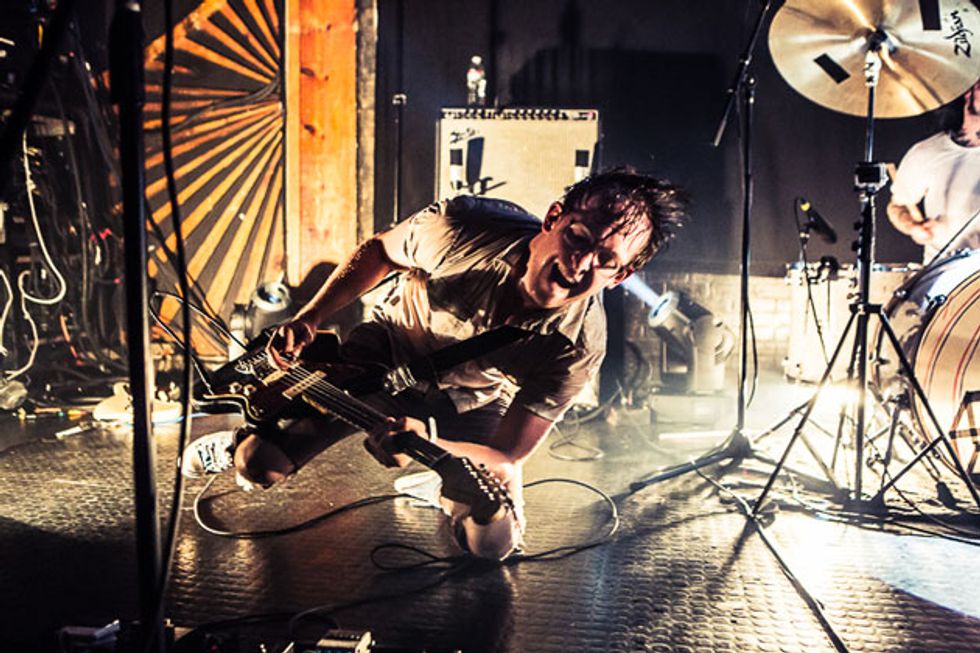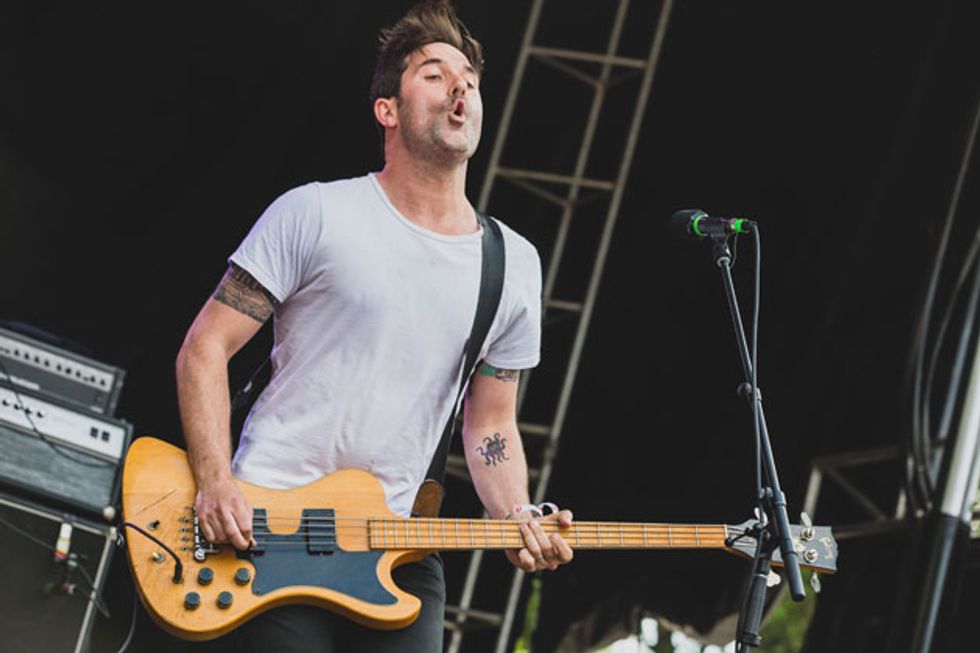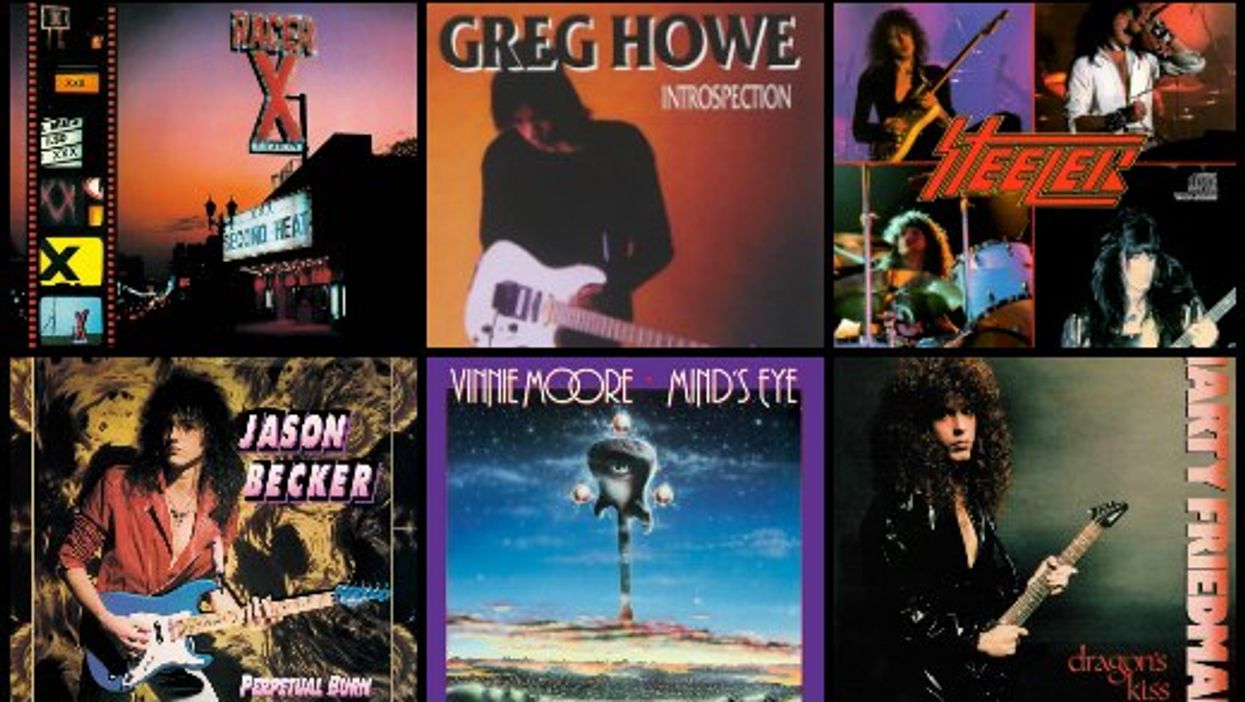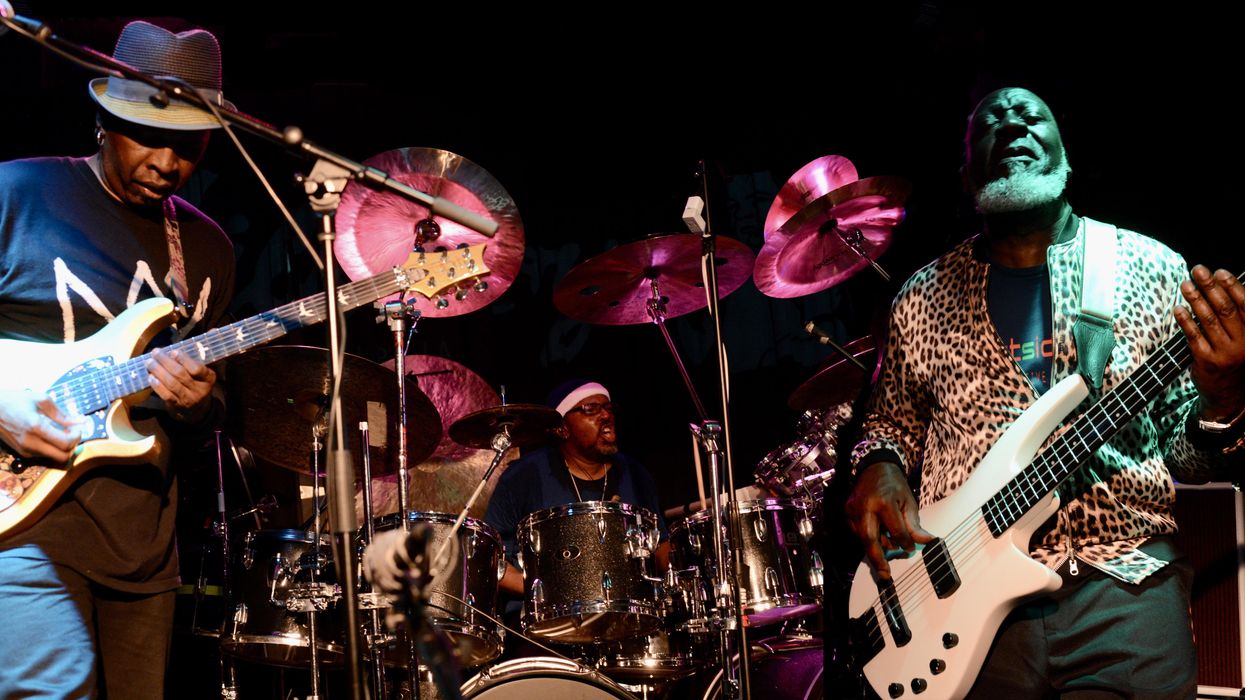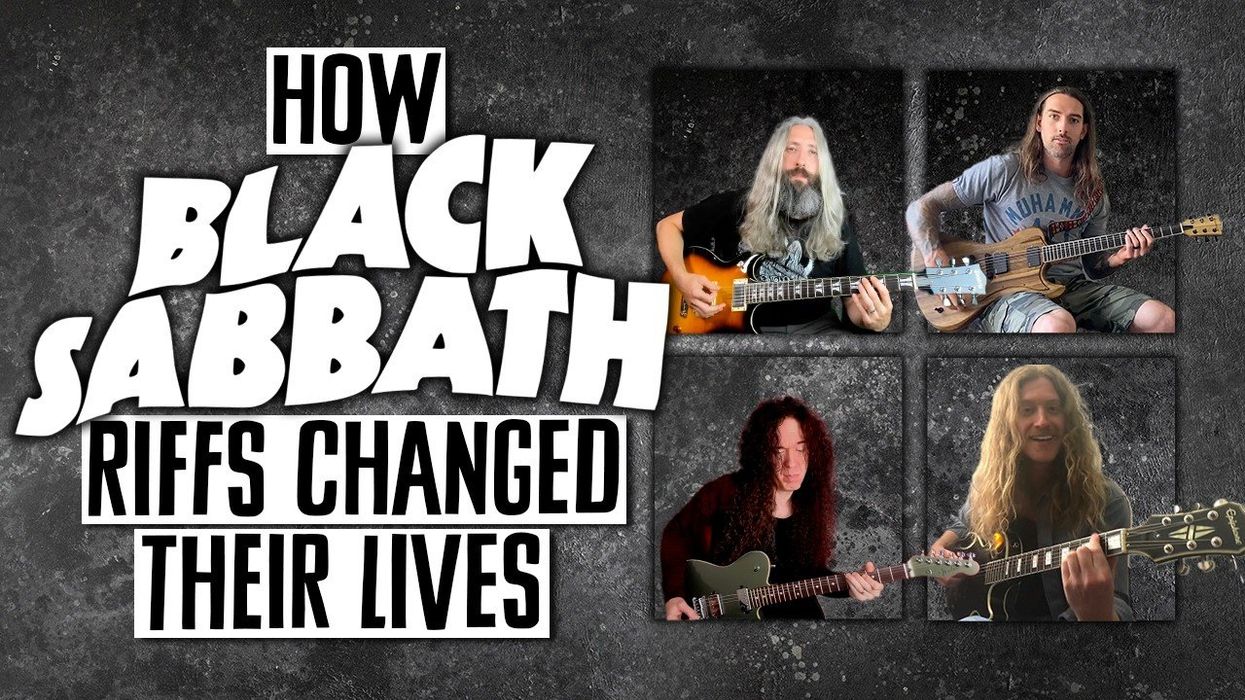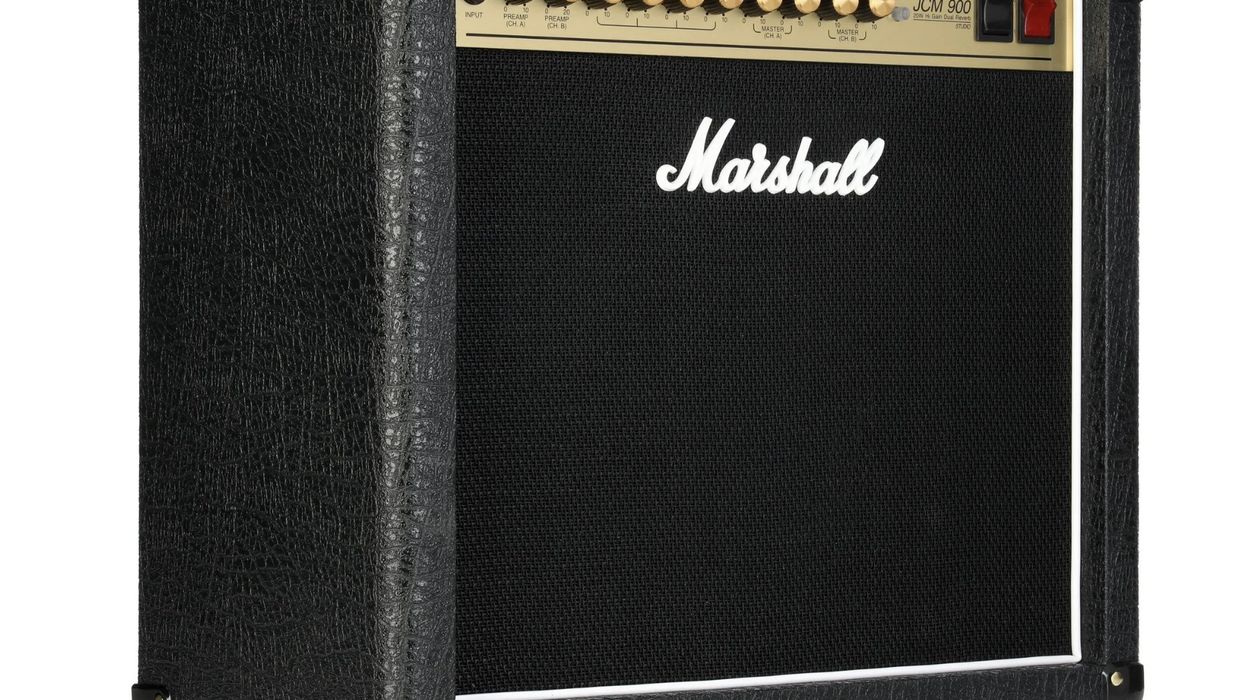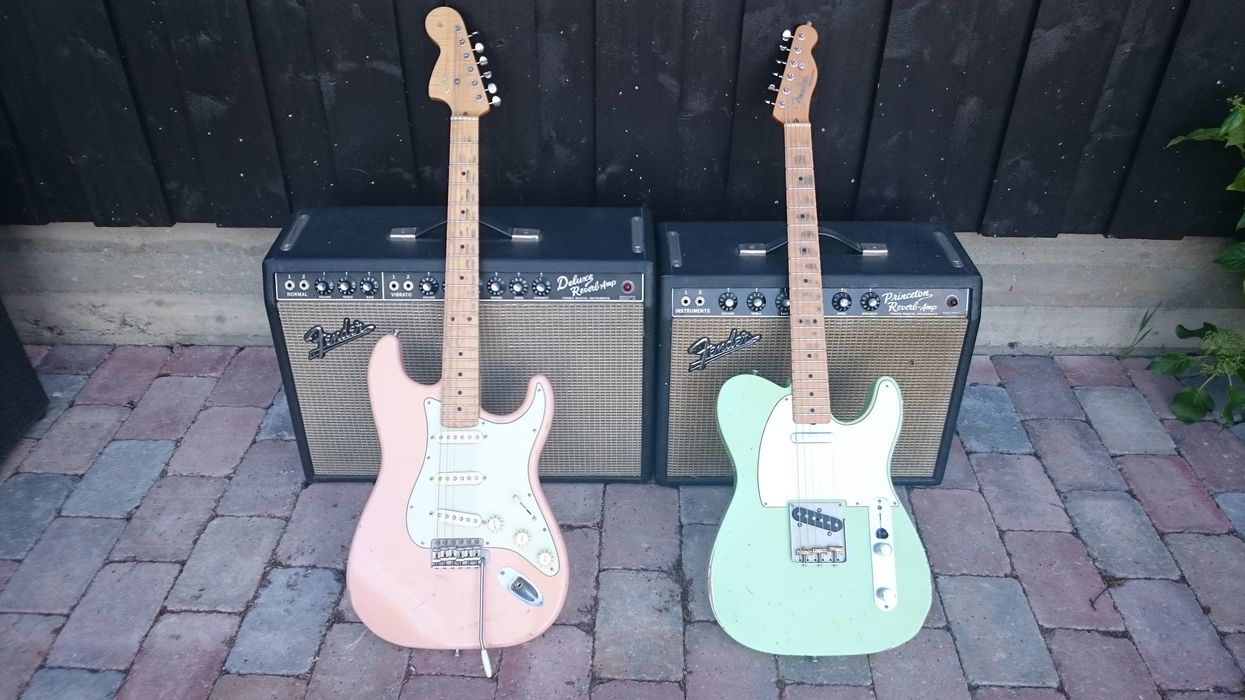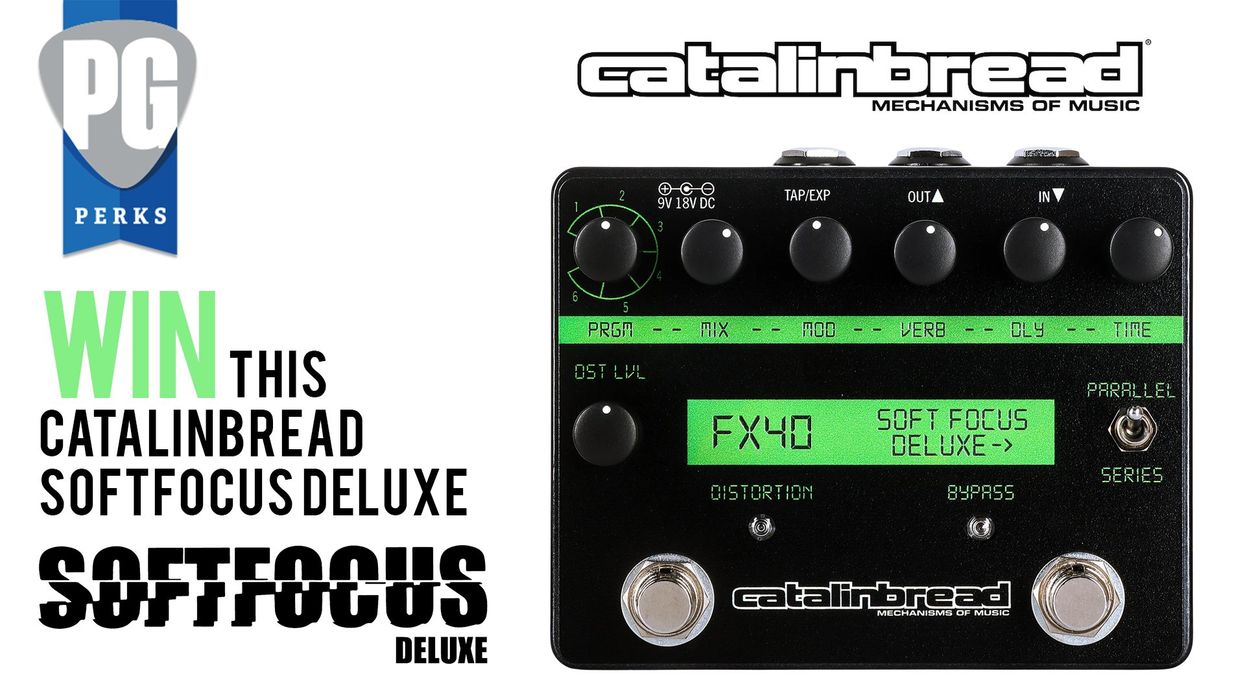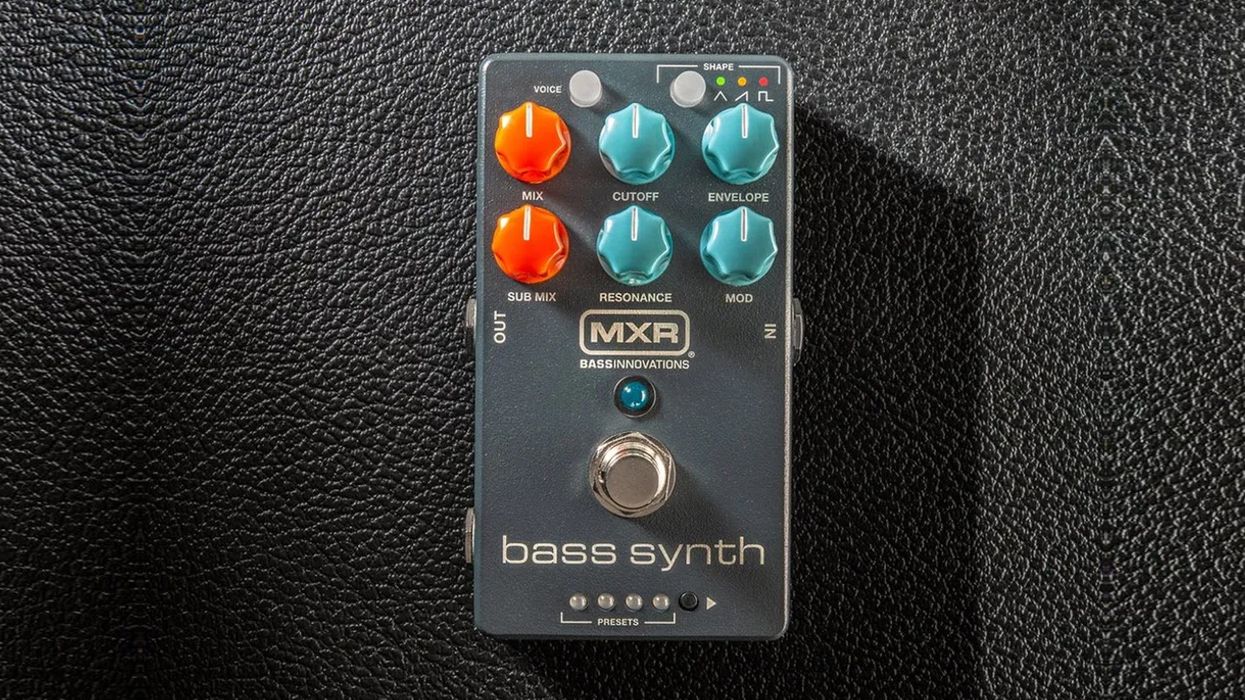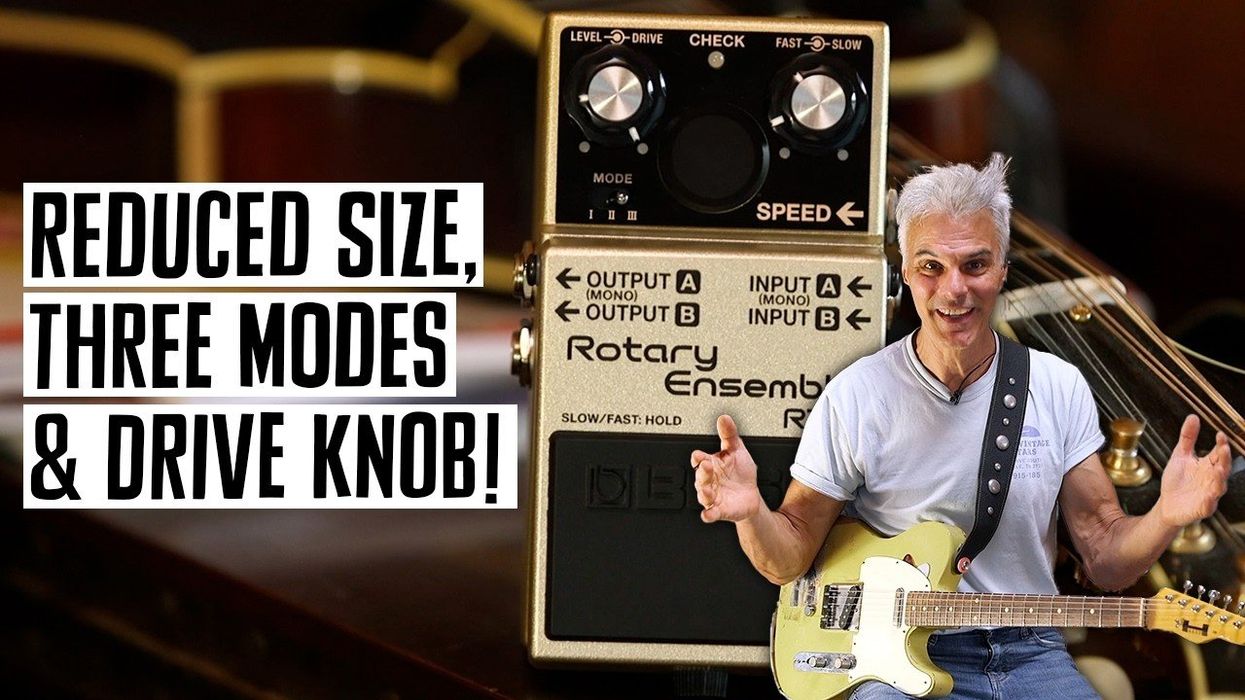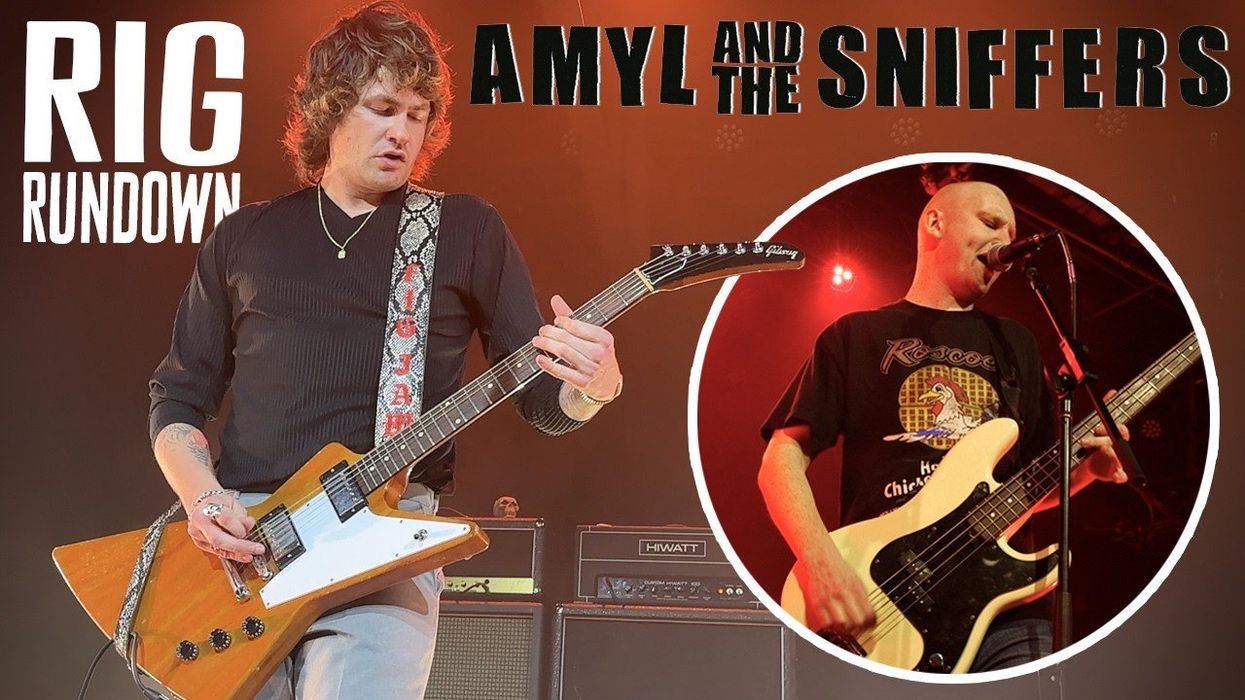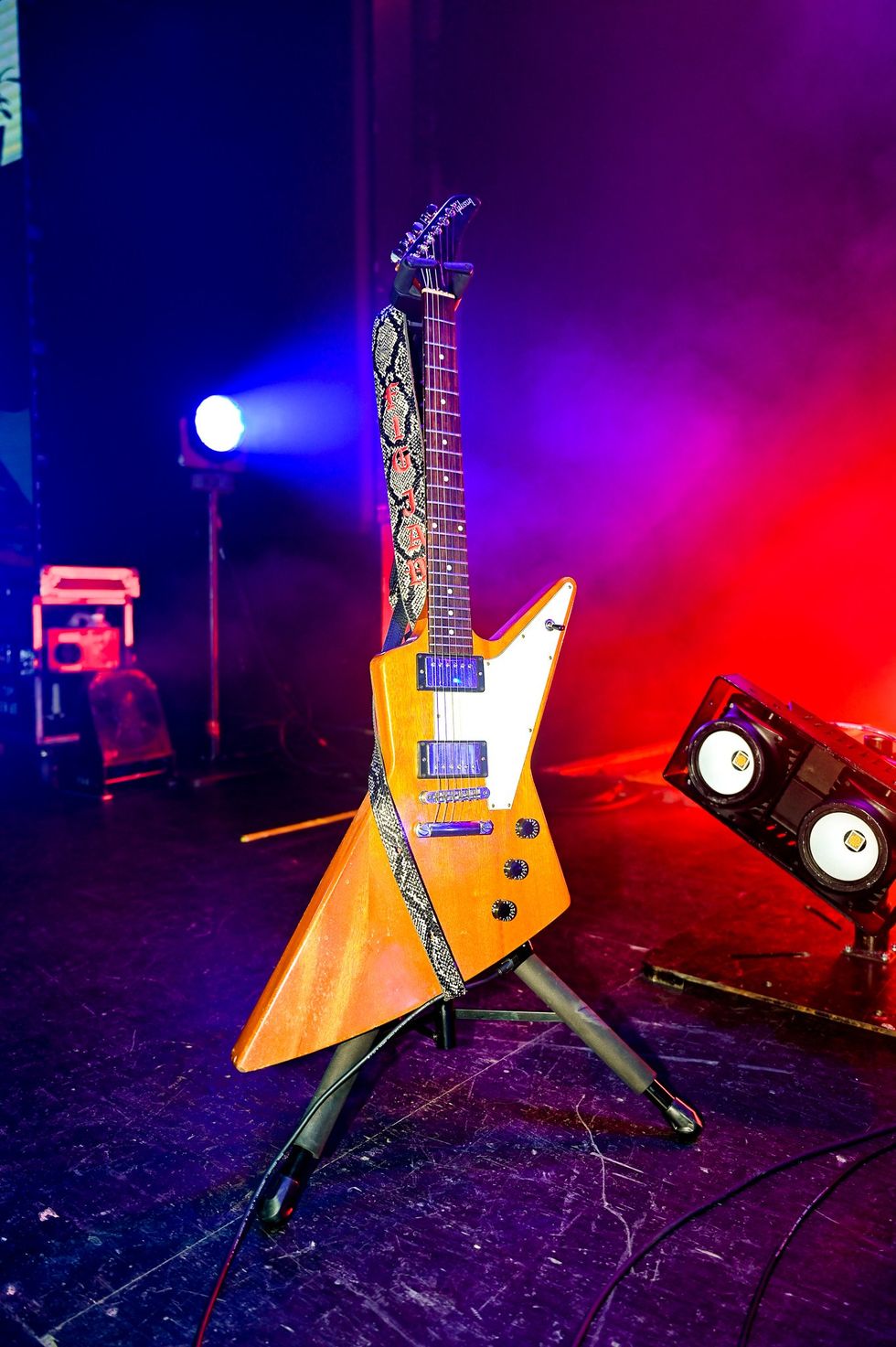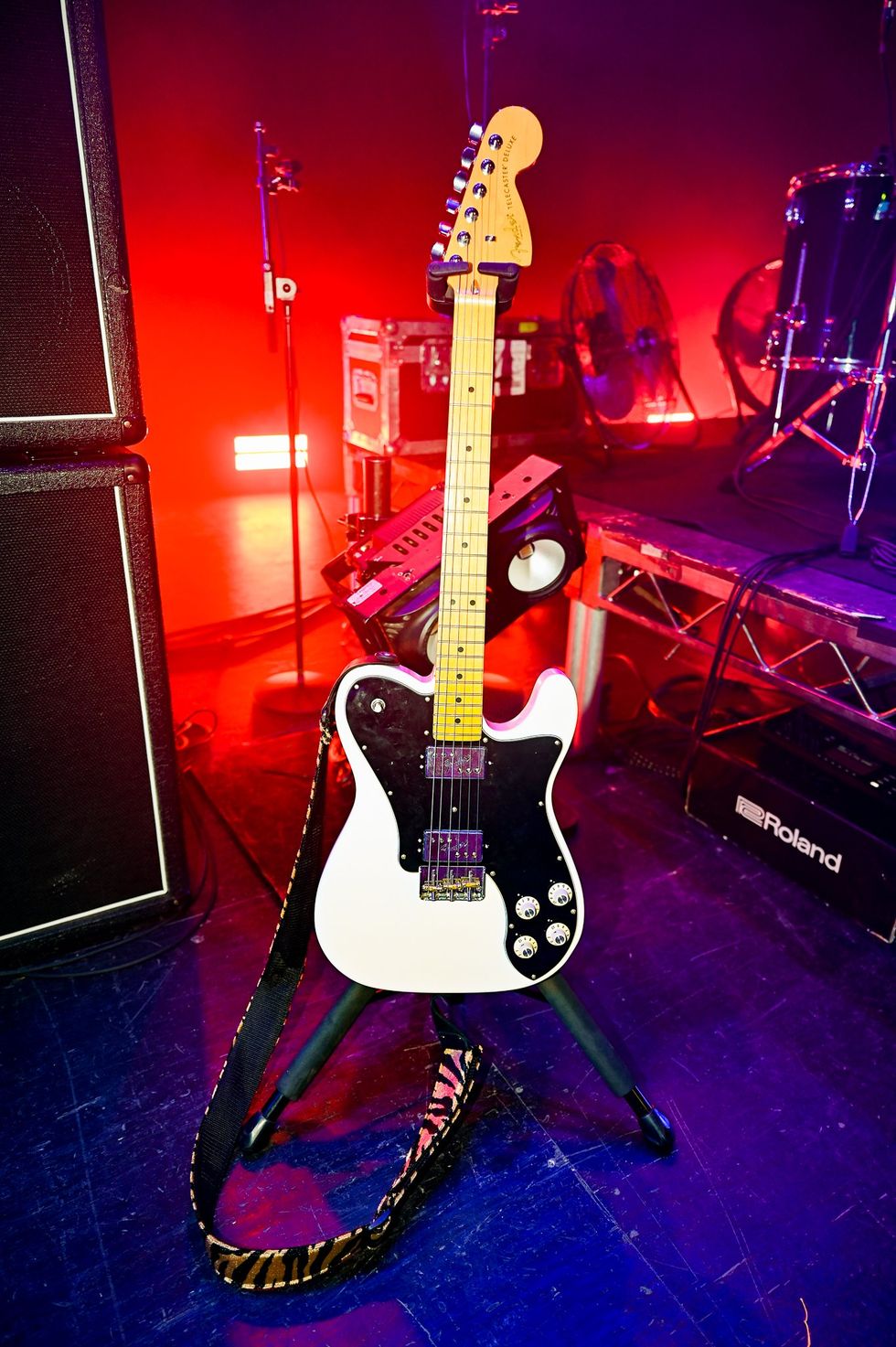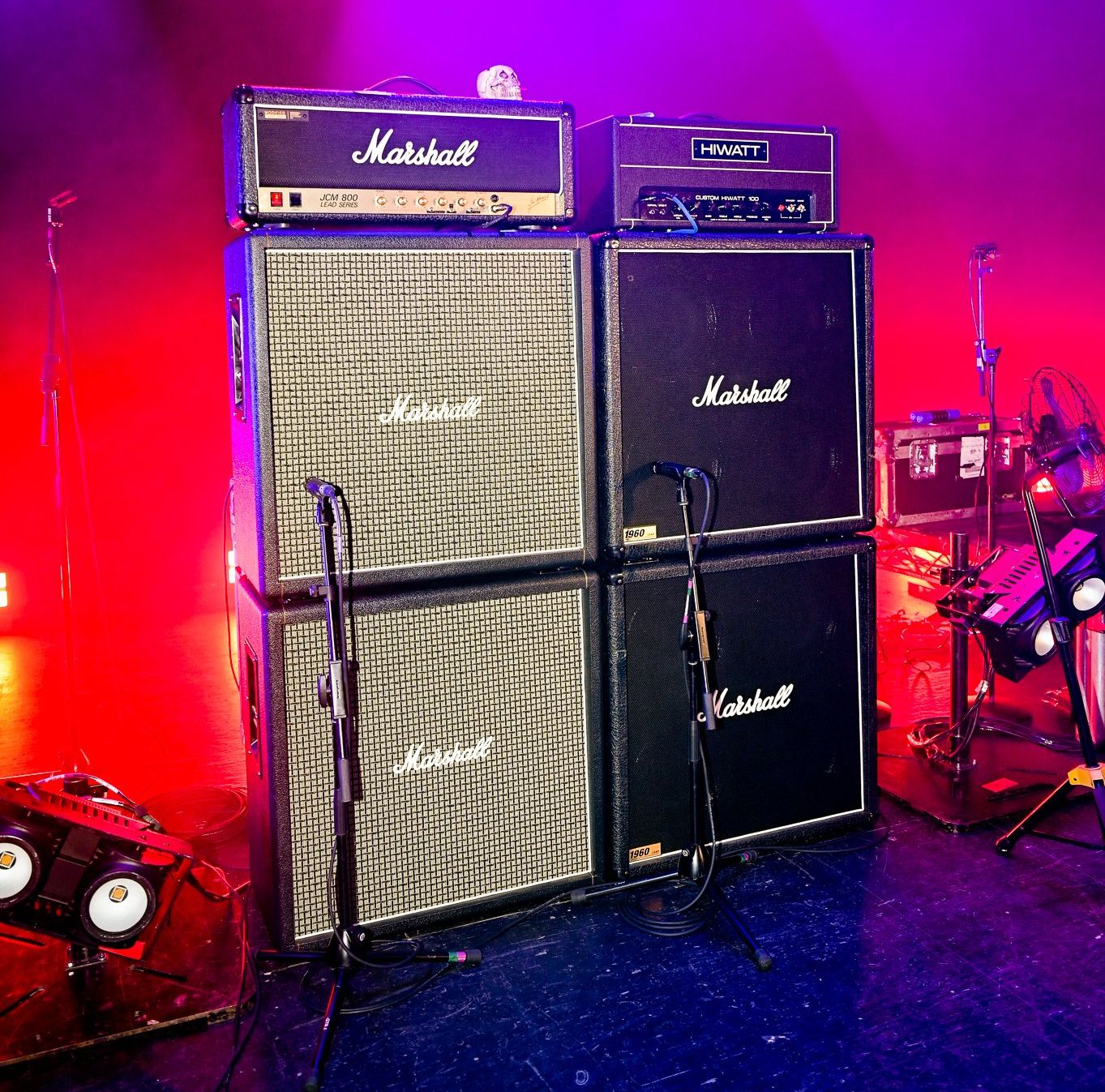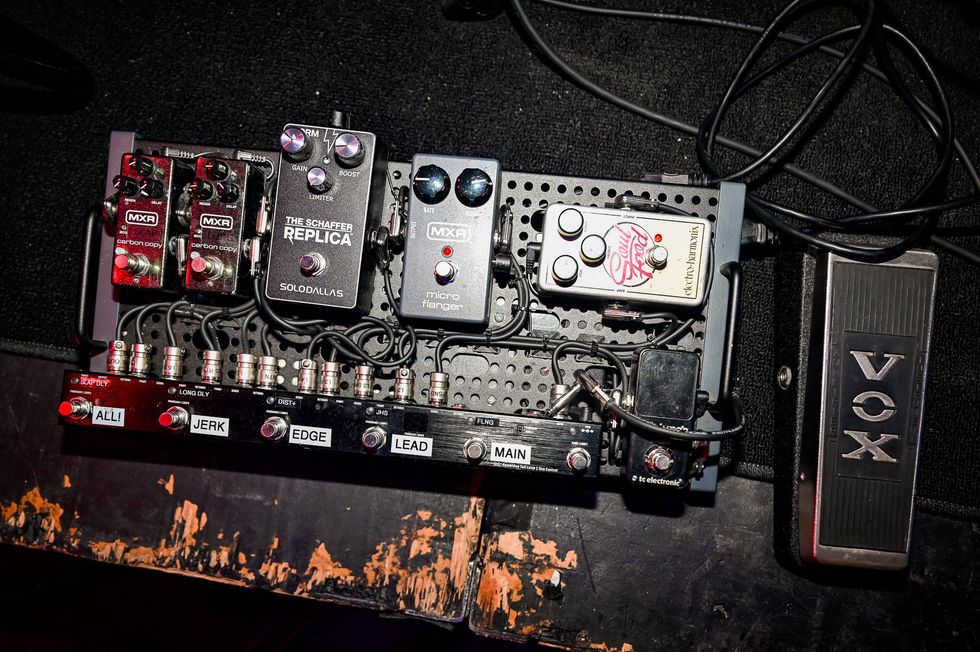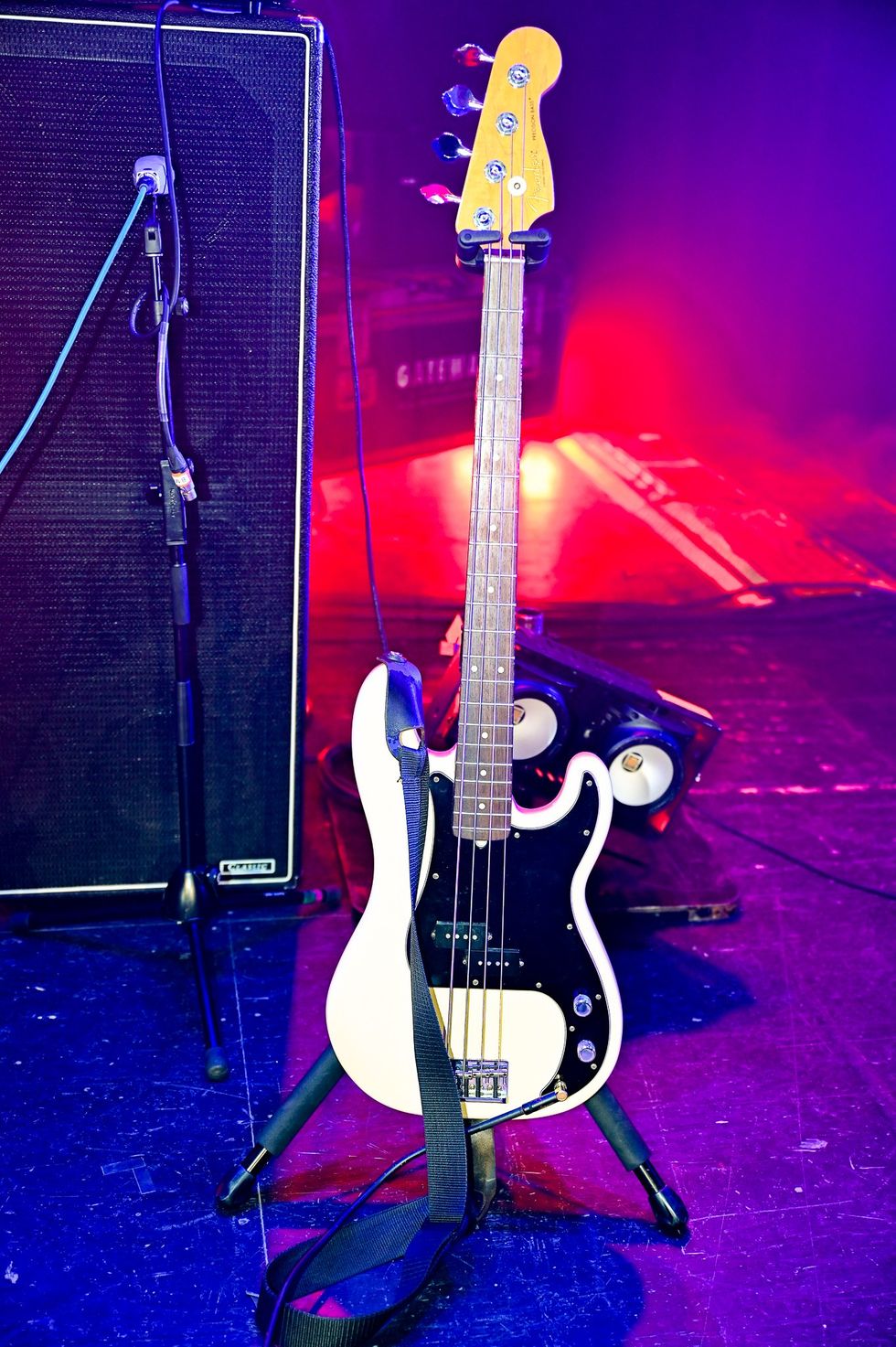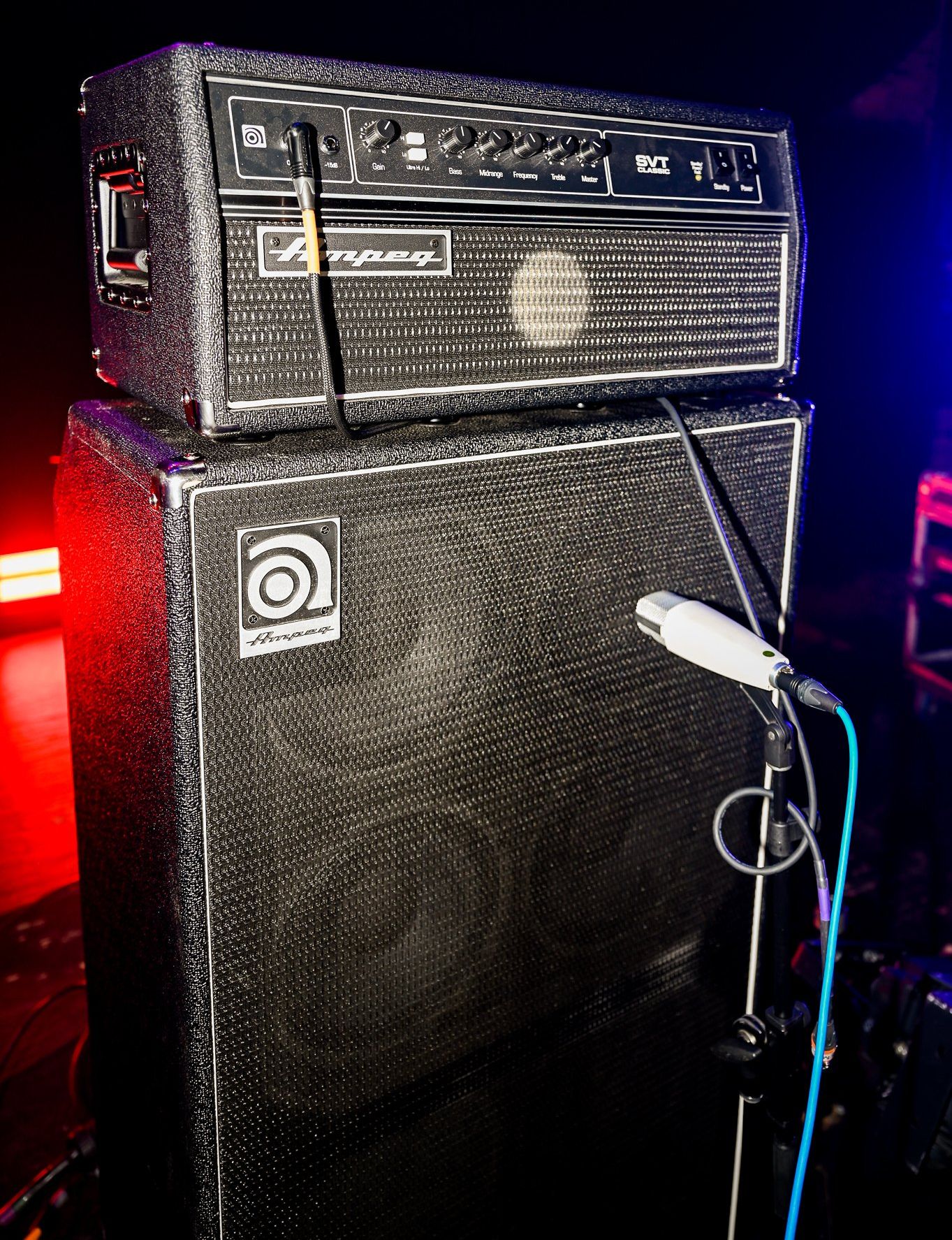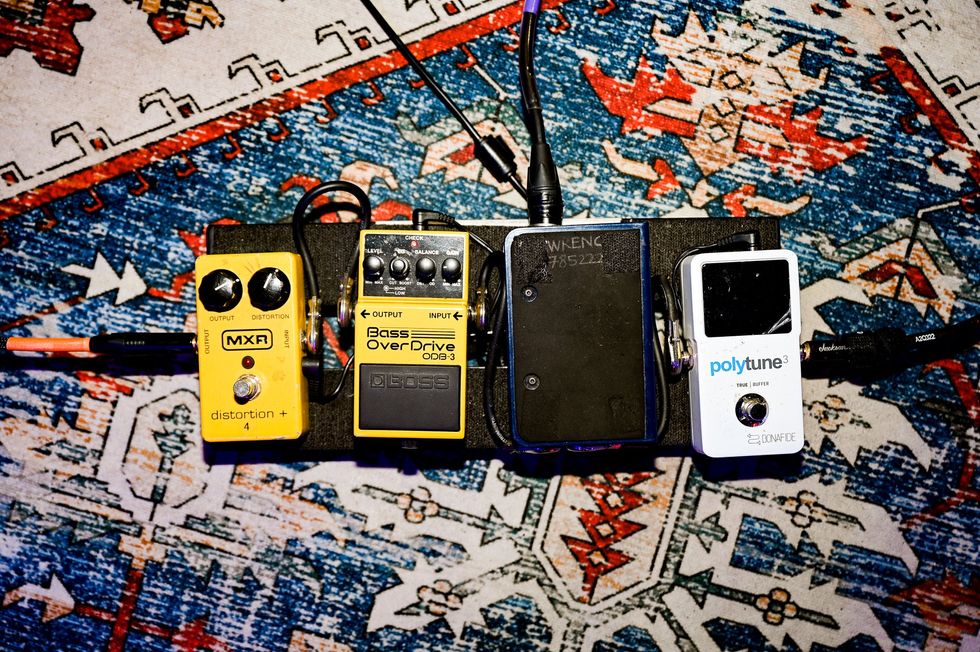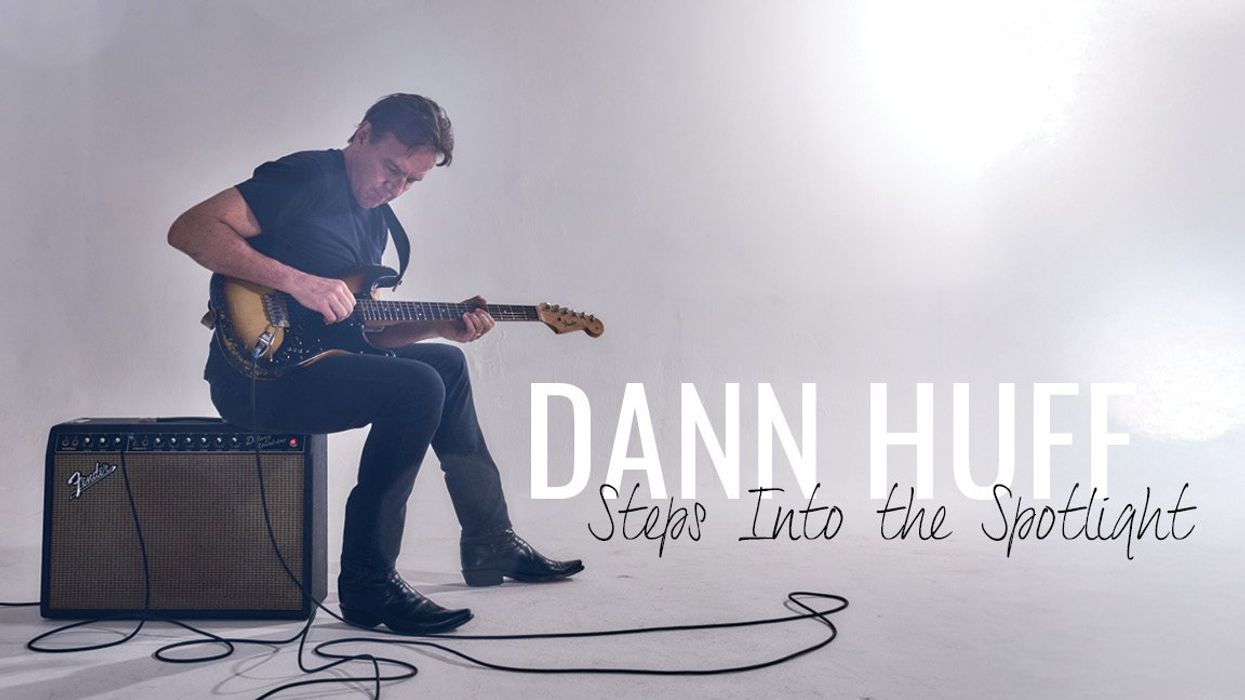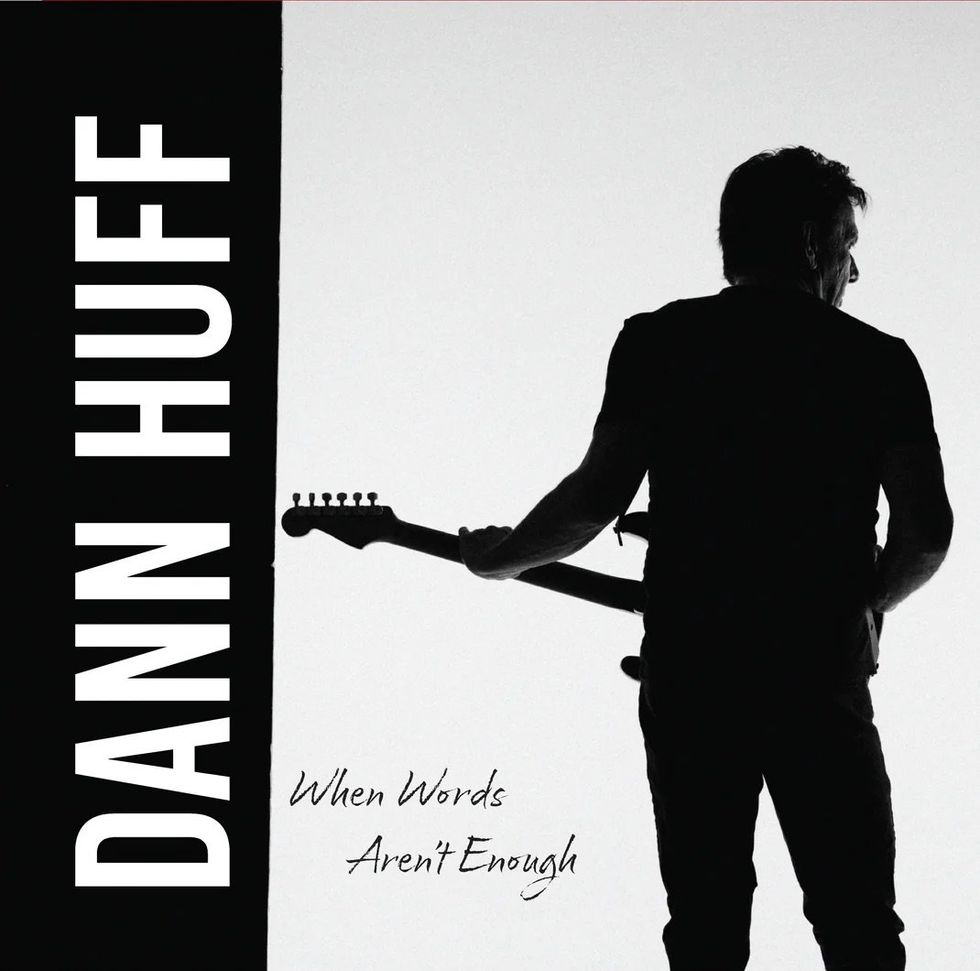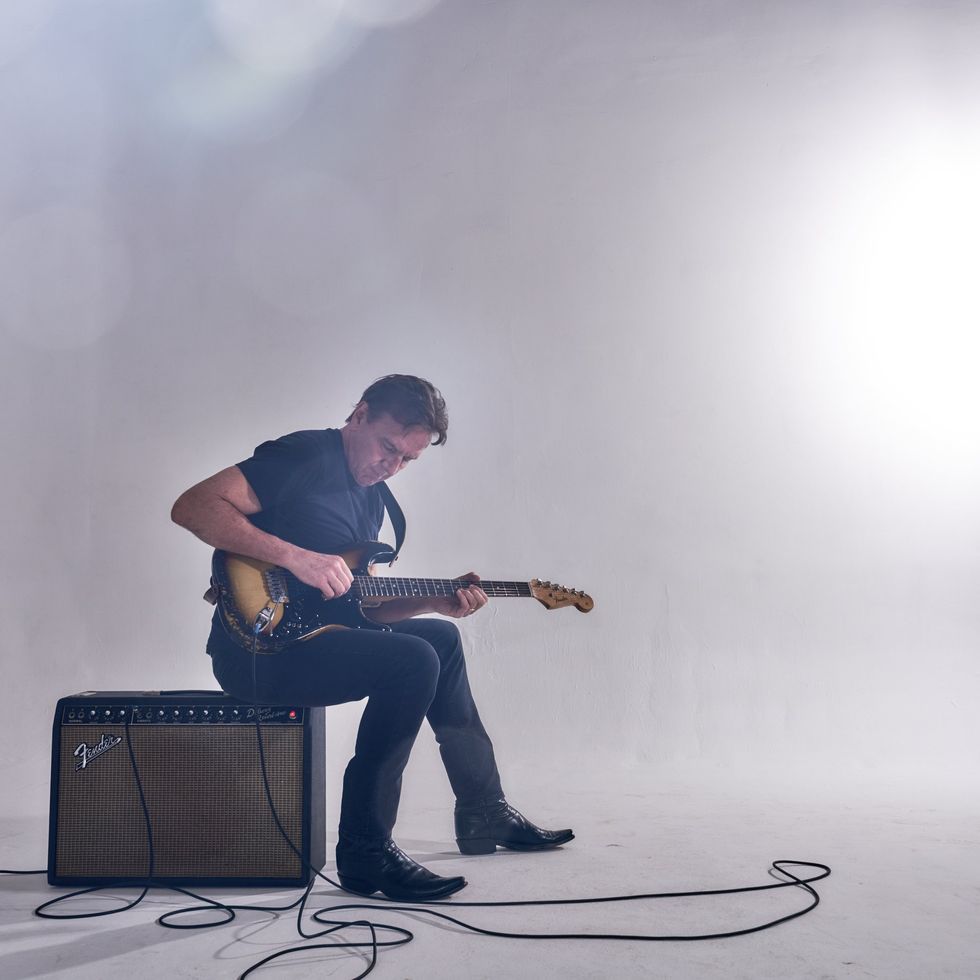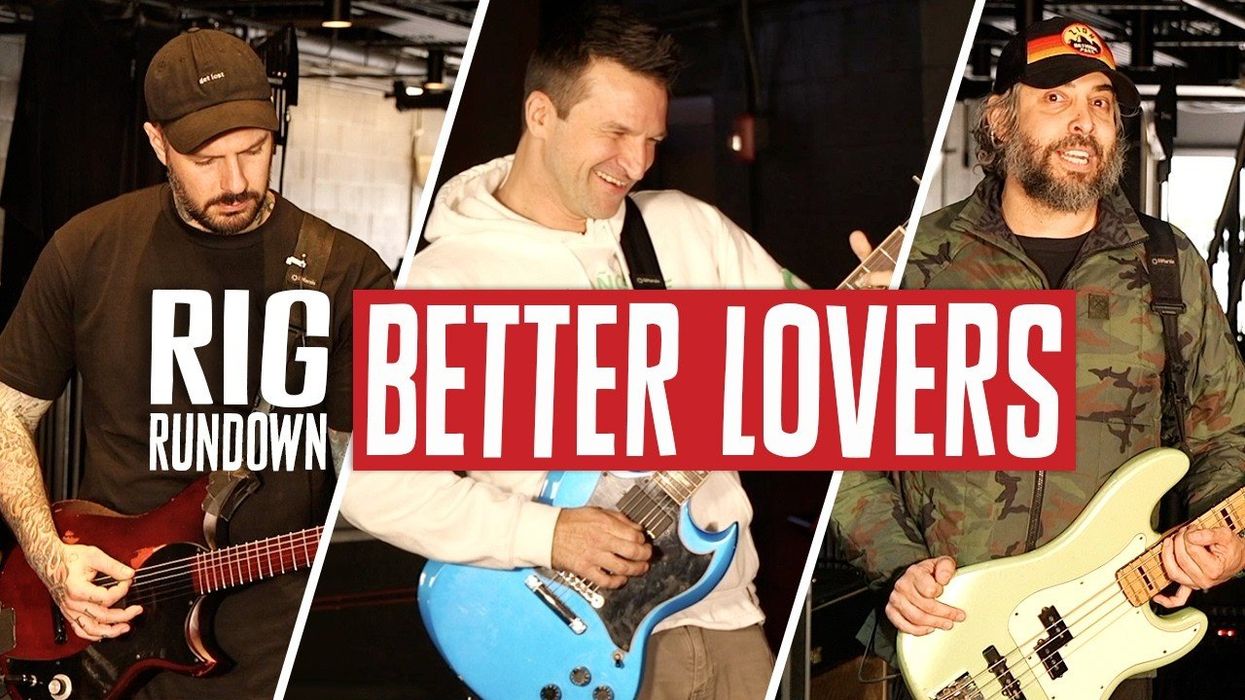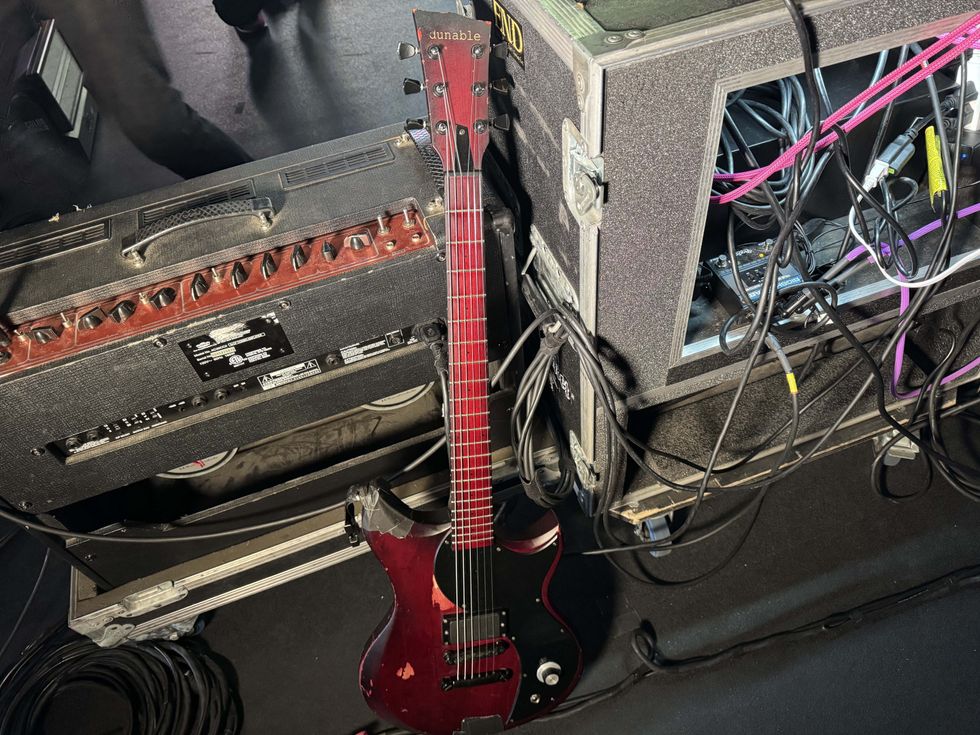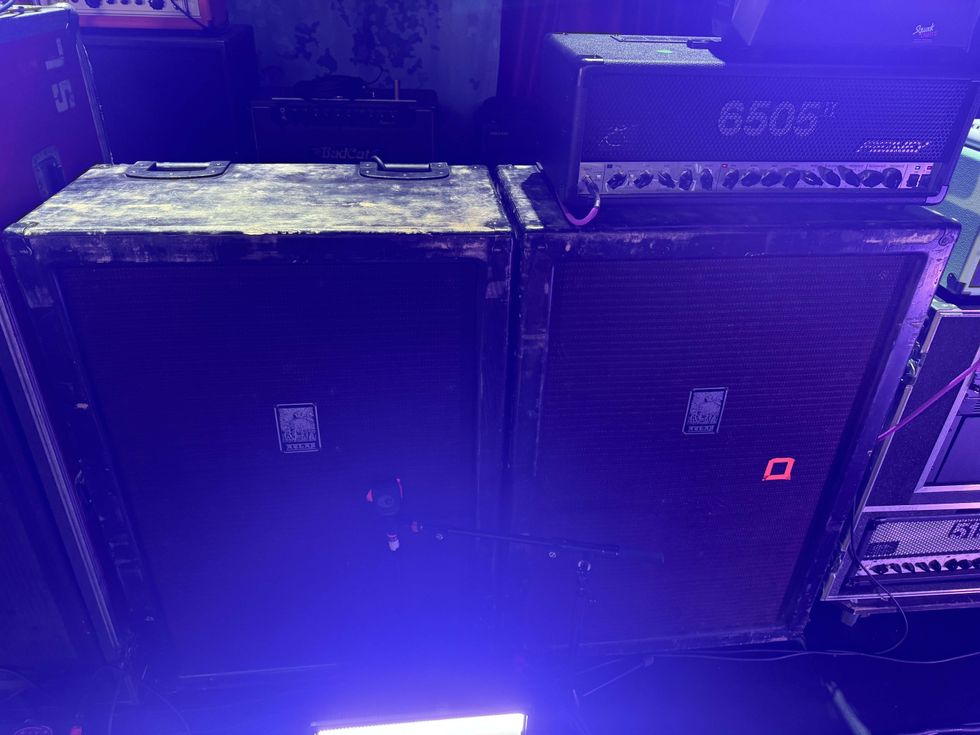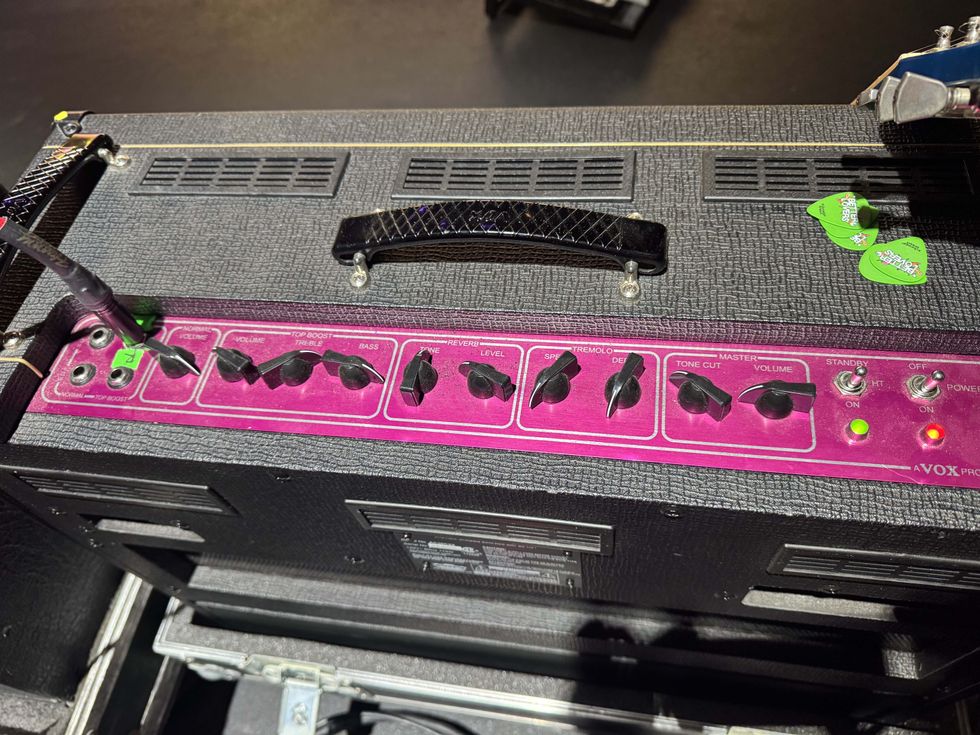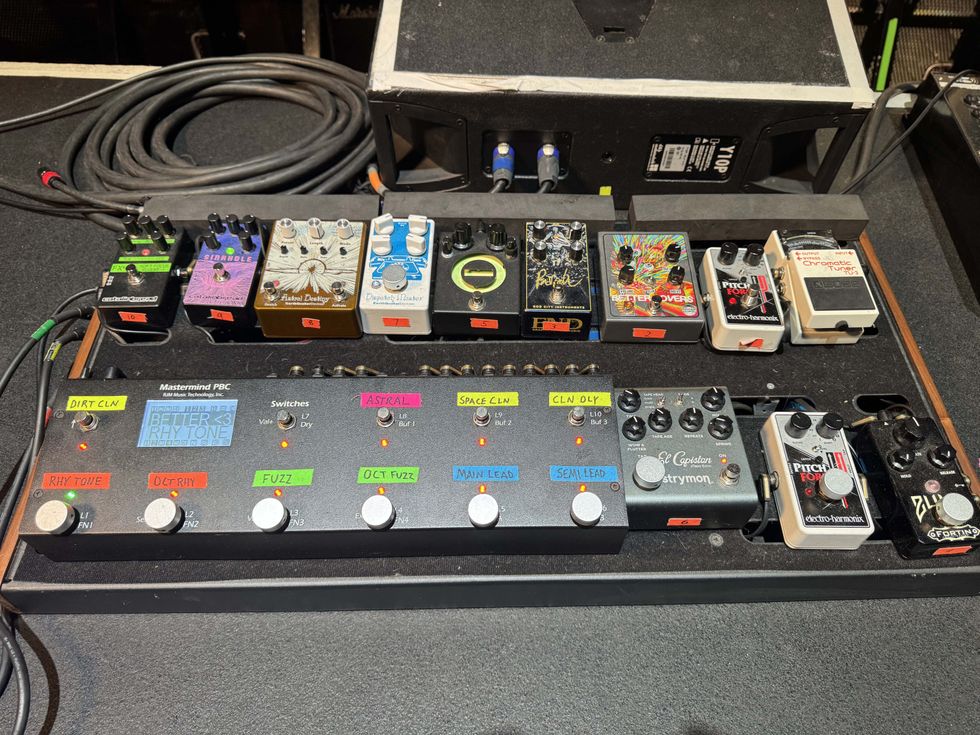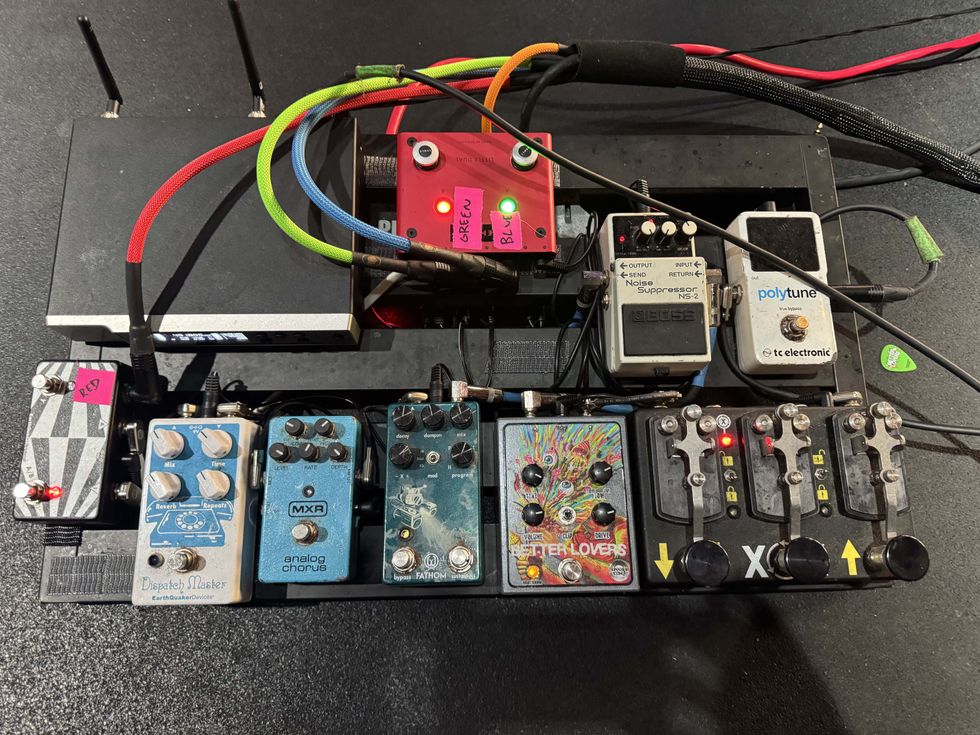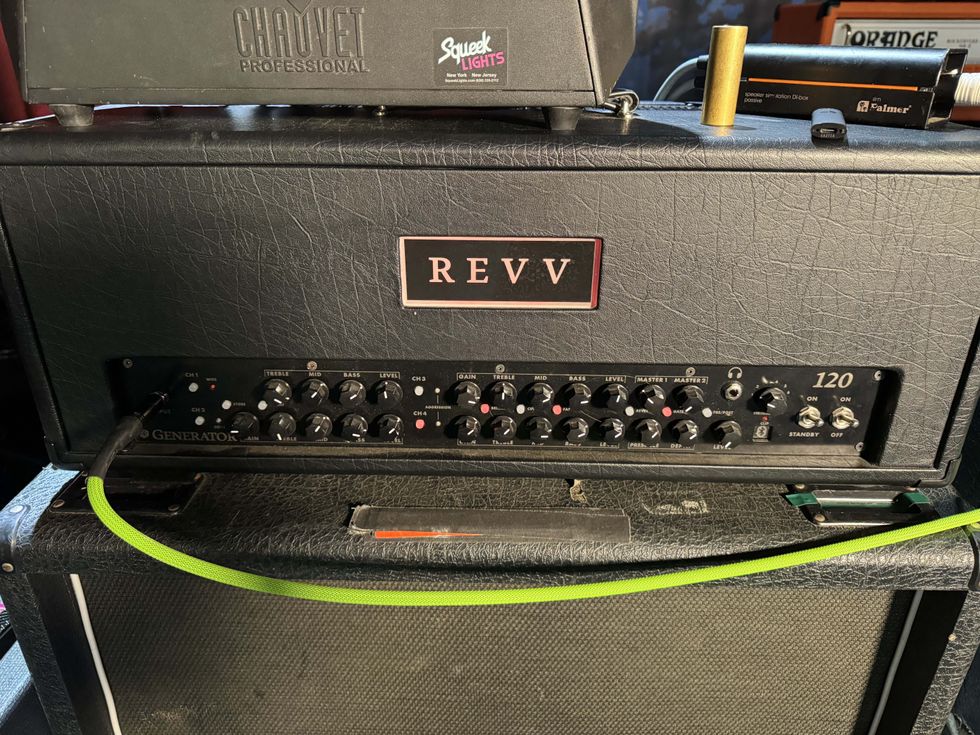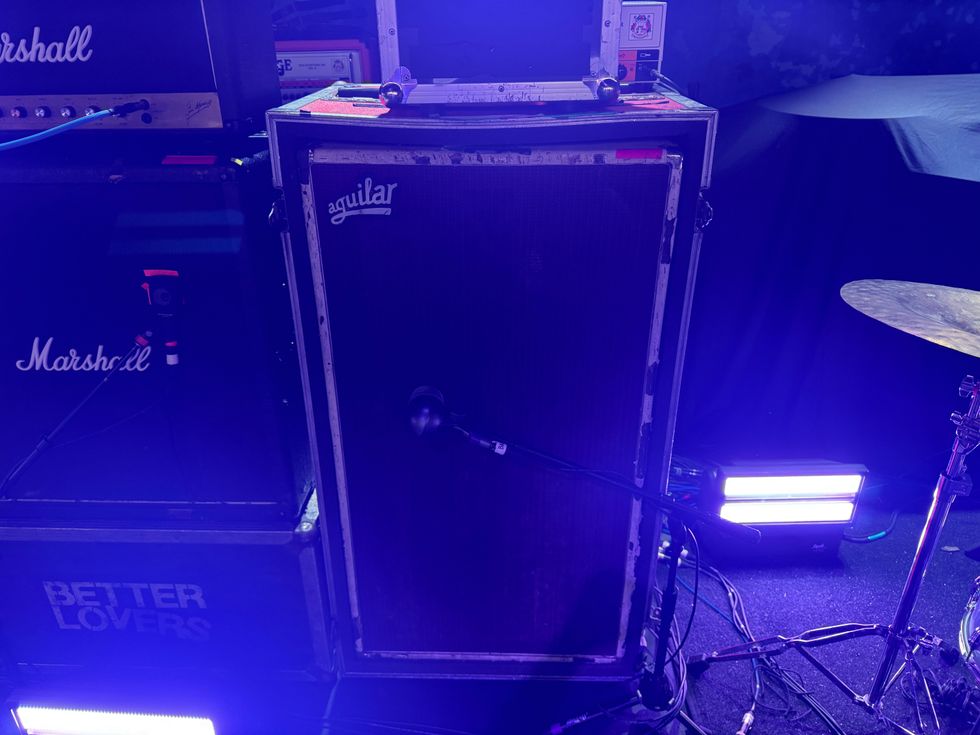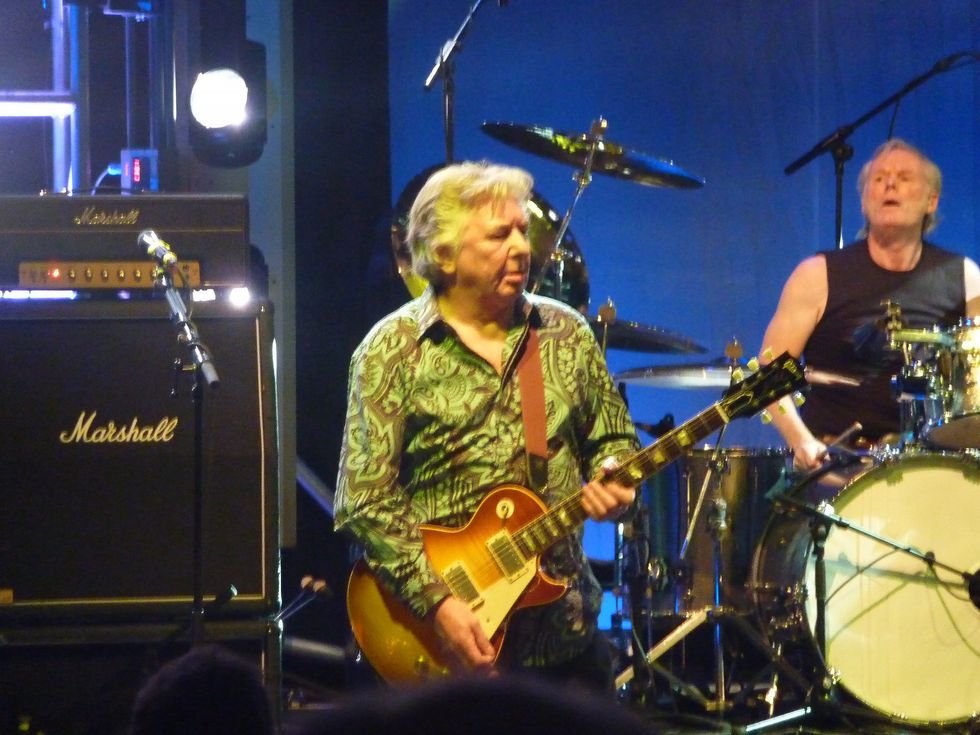In a time when the essential energy of punk rock has been watered down, rehashed, and otherwise consigned to mediocrity, bands like Canadian noise-rock upstarts METZ are few and far between. With the release of II, the Toronto-bred trio proves that they’ve harnessed and honed punk’s intensity in unique and potent ways. The band’s sophomore LP is a furious display of dissonant chords and jagged riffs, delivered in off-kilter time signatures and filtered through distorted raunch and swirling oscillation. And their live show is one of the most exciting unabashed expressions of rock ’n’ roll spirit in recent memory.
One of the snarling heads atop this sonic Cerberus belongs to guitarist/vocalist Alex Edkins. Edkins wields his Fender Jazzmaster like a jackhammer and swears by the inalienable truths of simplicity, obscene volume, and sheer, unbridled energy. Edkins took time mid-tour to ruminate on these qualities and discuss the group’s writing process, the indestructibility of Fender amplifiers, and the pitfalls of romanticizing guitar gear.
The intensity of your performances is incredible. How do you maintain it?
It’s really easy! It’s just what we do when we play, and that’s what the songs require of us. At the end of the show we’re pretty wiped, but going into it, it usually doesn’t take much conjuring of energy or anything like that. It’s kind of already there.
Where do you come from as a guitarist, and which artists were most influential you?
I have a hard time putting my finger on it, to be honest. I grew up listening to the Beatles, and then I found punk rock and hardcore. It’s been punk mail order since I was a teenager—whatever I could get my hands on in the suburbs. The approach to guitar in punk rock is so different than in traditional classic rock. It really connected with me—the simplicity, the physicality of it.
We definitely love the Cramps and that side of rock ’n’ roll. We also love the dissonant, weirdo stuff that bands like Jawbox and Fugazi would do, and even dreamier stuff like Spaceman 3 and other things in that vein. Our sound is a mix of everything we love, all smashed together. I have some obvious inspirations, like Thurston Moore, but I’ve also liked the guys that you don’t really hear. I’m not big on shredding guitar solos—there’s a time and a place for it, and I love it when it makes sense. But I prefer the guys who underplay.
What’s your writing process? Are all of the off-kilter rhythmic switch-ups built around guitar riffs?
Yeah, this time around it usually started with a riff. I did a lot of demoing at home, and I’d come in with a big chunk of a song completed, and we’d go from there. This allowed the vocals to be part of the process from the very beginning, which put them more in the forefront. The vocals used to be more of an afterthought for us, but now they’re a big part of what guides the songs.
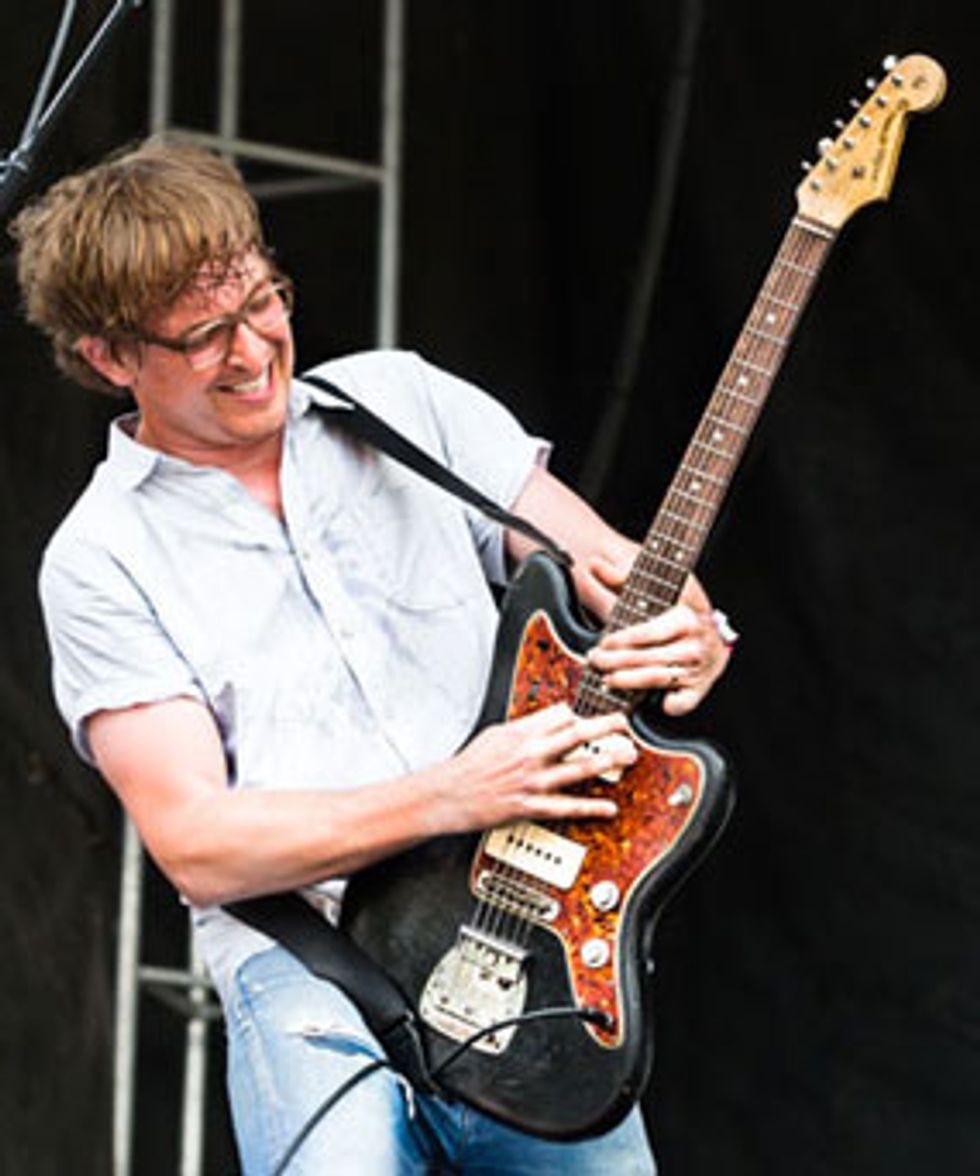
METZ guitarist Alex Edkins has played the same Frankenstein Jazzmaster for 15 years. It has an early-’60s body, an unknown neck, and the rest is stock except for a Whizzo Buzz Stop.
Photo by Debi Del Grande.
It often feels like every instrument in the band operates as a percussion instrument—especially when that rhythmic focus is delivered at such bombastic volume.
That’s funny—we did a tour with Death from Above 1979, and that’s the one thing that Jesse [Keeler] said to me: “You guys are all drummers, man!” I kind of understood it then, but it makes a lot of sense now after writing this album. We all play like percussionists.
What guitar equipment did you use on the album?
It’s pretty much my live rig—or at least that’s what I usually start with when we’re recording. That includes my main guitar: a Frankenstein of a Jazzmaster with an early-’60s body. I don’t know where the neck is from—probably some cheap knockoff. I’ve played it for about 15 years, and it’s still the one I play religiously. I run it through pretty basic stuff. I love the loud, clean sound of Fender Twin Reverb, so that’s the platform I start with. Then I run the Jazzmaster through a bunch of pedals to find what I’m looking for on a specific track.
Did you do any interesting experimentation while recording II?
We were jumping from studio to studio, so we were trying out different pedals and amps all the time. We were messing with different things, trying to sort it out. We were even running guitars through old radios and compressors that our producer, Graham Walsh, has specifically to get tones that sound like the speakers are tearing themselves apart. The intro to “I.O.U.” is a great example of that. That’s not digital processing—it’s actually coming from a small amp that we basically just destroyed.
On METZ’s aggressive playing style, Edkins says: “We did a tour with Death from Above 1979, and Jesse [Keeler] said to me: ‘You guys are all drummers, man!’” Photo by Debi Del Grande.
With the vast range of degraded/distorted guitar textures on the album, which particular pedals or amps were standouts?
We’re big fans of the Death By Audio stuff—those guys are friends—and we love the EarthQuaker Devices stuff. But honestly, I use a Pro Co Turbo RAT, straight up, almost all the time. I sometimes run a SansAmp GT2 to boost the RAT a bit more, and a couple of delays. But that’s it.
What year is your Fender Twin?
I’ve used a bunch of the vintage ones, but I tour with a reissue because the reverb sounds different, and actually I like it better than the vintage reverb. It’s a little less rounded and soft around the edges, and somehow a little more clear. If we need to get a backline, I actually request the new ones. The funny thing is, I’ve had my own Twin for maybe 15 years, and I’ve never even changed a tube. I think it’s just completely blown out.
If that’s not a testament to the indestructibility of Fender amps, I don’t know what is!
Pretty wild. That thing’s been around the continent at least five times, and it’s still going—knock on wood.
That’s ridiculous, considering your volume.
I know. That’s exactly why I have that amp: because it’s so damn loud!
I’ve seen you run the Twin with a 4x12. What speakers are in the cab?
I think they’re Celestions, but I’ve never looked. I just plugged in and said, “Sounds good to me!” By no stretch of the imagination am I a gearhead. It’s not about what you’re playing on—it’s how you’re playing it. That’s always been our approach. We have to physically wrench things to get certain sounds out of them. I almost play the amp more than I play the guitar.
Alex Edkins’ Gear
Guitars
Early ’60s Fender Jazzmaster with aftermarket neck
1964 Fender Jaguar (backup only)
Amps
Fender ’65 Twin Reverb reissue
Fender 4x12 cabinet
Effects
Pro Co Turbo RAT
Tech 21 SansAmp GT2
Boss DD-5 Digital Delay
Boss TU-2 Chromatic Tuner
Strings and Picks
Gauges .010–.046 (no specific brand)
None of us have really changed our setups much over the years because we prefer to get used to what we’ve got, and then work with that. I think it improves how you play when you’re less focused on what you’re playing through. That’s not to say we don’t try different guitars and amps and things when we record—that’s part of the fun! But for live performances, we keep it pretty stripped.
Jazzmasters have a particular sound because of the long string length. Would a different guitar yield the clang and grunt that is so distinctly METZ?
>
It’s never even been a thought for me to change. I restring it a lot to keep it even more janky and bright-sounding, and also so I don’t have to use my backup, which is a Fender Jaguar. The Jaguar is a great-sounding guitar—I think it’s a ’64—and it’s got that fantastic vibrato bar. But I do not want to play that thing live! I only want to play my Jazzmaster because nothing else sounds like it.
Is your Jazzmaster modified with an aftermarket bridge or anything like that?
To my knowledge, it’s not modified at all. It’s got a [Whizzo] Buzz Stop installed, but other than that, it’s stock. I’ve never had any issues with strings popping out of the saddles, luckily. For me, the only thing a guitar’s really got to do is stay in tune. If the strings were popping out a lot, I would have ditched it by now.
YouTube It
METZ blasts through a typically violent set at Mexico City’s Festival Nrmal earlier this year.
How does the band tune?
I love when people ask me that! It’s standard tuning. I’m totally into weird tunings because I’m a fan of bands like Sonic Youth, Archers of Loaf, and Polvo, but that’s always been kind of frightening for me to attempt. So I keep things in standard tuning, but try to make up chords that sound like I’m in a different tuning.
Bassist Chris Slorach maintains a half dozen specimens of his favorite bass model: the rarely seen Gibson Artist RD. “I like the tone of the active electronics and the sound of the body’s string-through construction,” he says.
Photo by Debi Del Grande.
Obsessive Collecting with METZ’s Bass Beast
Bassist Chris Slorach is responsible for much of METZ’s sonic heft. Formerly a guitarist, Slorach plays only Gibson RD Artist basses. His affinity for these Norlin-era oddballs has made him a collector by necessity. But what makes these basses so ideal for METZ’s distinctly filthy low-end sound? We asked him, so read on.
I’ve never seen you perform with anything other than a vintage Gibson RD Artist.
I’ve actually got six of them at the moment. I use one of those and a Gallien-Krueger 800RB—a super-reliable classic head. Then I throw in an overdrive pedal to break the whole thing up even more. Those basses are already really hot, so the overdrive pushes it over the edge.
What is it about the RD?
I like the tone of the active electronics and the sound of the body’s string-through construction. I found my first RD at a used guitar store that was going out of business. I initially hated its sound, but after a month of playing with it, I totally fell in love with the tone. I haven’t been able to use anything else since.
What’s your overdrive of choice?
Just a [Tech 21] SansAmp Bass Driver. I crank the output so it heats everything up even more.
Are all your RDs are loaded with the original Moog electronics from back in the day?
Yeah! I make sure the original electronics are intact on all the ones I buy. Those electronics are everything to me—otherwise, I would just use any old bass.
Are you still actively collecting them?
I’ve had to stop for a while because every time I saw one, I’d buy it. It got really expensive. I’m not the guy who has that kind of money to just throw around, and I don’t have the room in my house anymore. But whenever I see one, I’m tempted!

